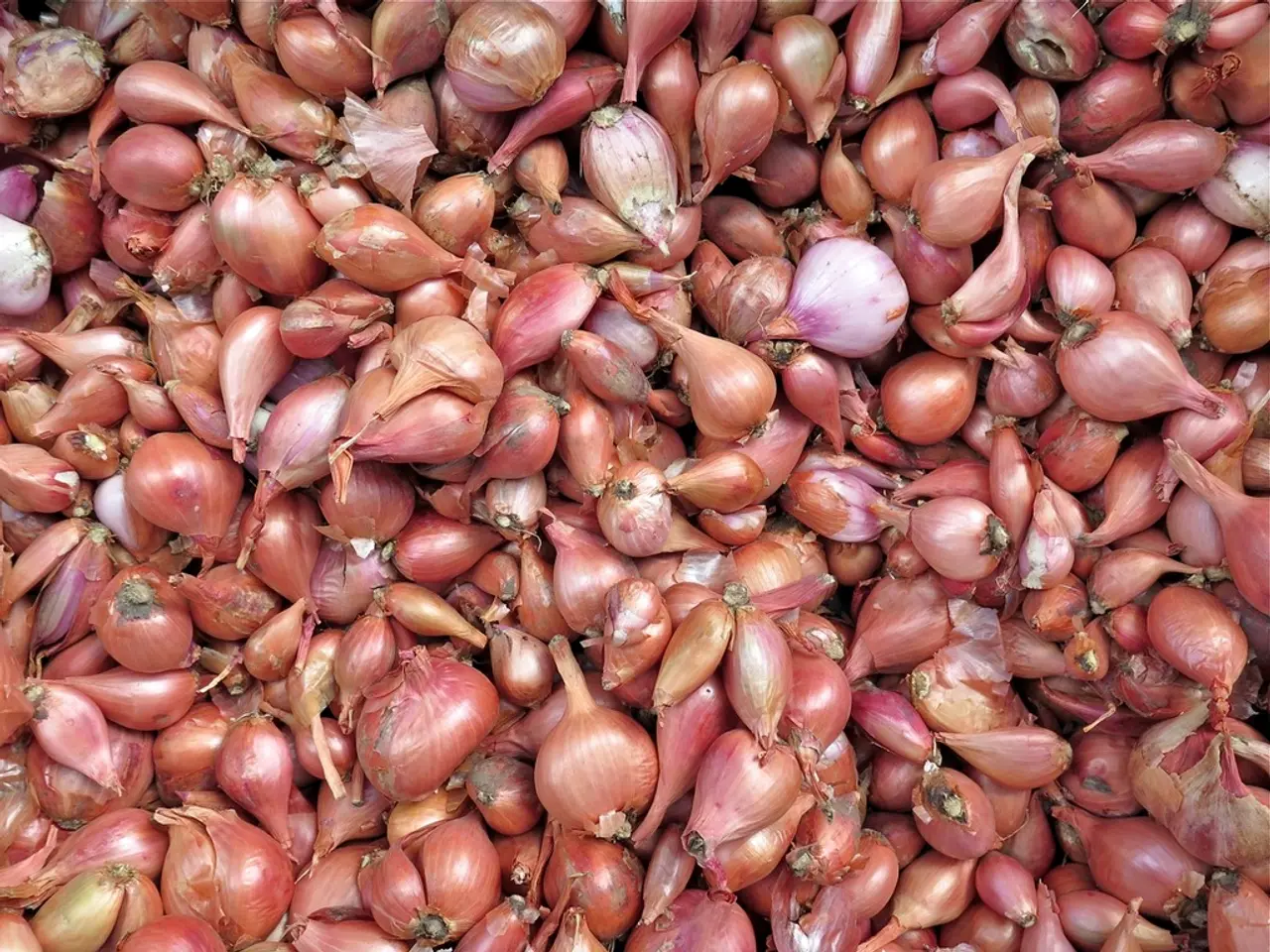Comprehensive Instructions for Cultivating and Preserving Onions: A Practical Guide
Growing and Storing Onions: A Guide for Home Gardeners
Onion gardening can be a rewarding experience for home growers, offering a variety of flavors and storage options. The best onion varieties for your garden depend on your climate and storage needs. Here are some top choices:
- Wethersfield Red is a long-day, large deep-red onion with good storage and flavor, traditional in New England.
- Galmi Onion is a short-day, pinkish-purple onion ideal for warmer climates, known for its good storage and flavor.
- White Creole is a short-day onion suitable for southern regions, with firm translucent white flesh and very good storage quality.
For long-term storage, consider varieties such as Copra, Sweet Sandwich, Red Zeppelin, and Stuttgarter. These are bred for good winter storage longevity. On the other hand, Walla Walla, Candy, and White Sweet Spanish onions are ideal for short-term storage.
To ensure optimal growth, choose onion type based on your day-length zone (short-day for southern areas, long-day for northern). Plant onion sets or seeds at the correct depths and spacing in well-prepared, weed-free, loose, fertile soil. Onions require about 1 inch of water per week and thrive in sunny locations with light, well-draining soil.
Proper care involves watering consistently but avoiding waterlogging, controlling weeds by frequent shallow cultivation or mulching, fertilizing with balanced nutrients, and removing flower stalks if they appear.
Harvest onions when tops begin to yellow and fall over, but before flowering. Cure them by drying in a warm, dry, well-ventilated space until necks are tight and outer skins papery. Store cured onions in cool (45-55°F), dark, dry areas with good air circulation. Properly cured onions of the right variety can last several months to nearly a year, depending on cultivar and storage conditions.
Onions are available in white, yellow, and red colors. The commonly used cooking onion is medium-sized, hardy, easy to grow, and can be stored for a long time. Onions grown from onion sets do not store as well as onions grown from seeds but can still be stored for a couple of months. Onions can be frozen whole if stored in a place that stays slightly below freezing.
For storage onions, wait until the greens fall over and dry before harvesting. The Welsh onion will develop new clumps you can harvest. Onions need to be cured for several weeks before storing to ensure they are dry. It's not necessary to keep onions weed-free, but weeds should not shade the plants from the sun.
Onions can be grown either from seeds or sets. Onion sets are small onions that are grown from seeds but not allowed to mature. Onions are categorized into long-day, short-day, and day-neutral onions, based on the number of daylight hours required for bulb production.
Onions can be enjoyed at any stage of growth, but thick-necked onions do not store well. Perennial onions, such as the Walking Onion, require minimal maintenance and will come back year after year. Short-day onions thrive in the south and require about 10 hours of daylight, while long-day onions, which need approximately 14-15 hours of daylight, are best suited for the northern climate.
Onions can be frozen to preserve them for use in recipes. Protecting onions against onion maggots with insect mesh can be beneficial. Onions will taste just as good as fresh onions when thawed, but they will not keep as long once defrosted.
The sweet or Spanish onion is excellent for adding to salads, eating raw, or making onion rings, but it is not as resilient as cooking onions, requires more space to grow, and does not store as long. Shallots have a sweeter taste than onions and are a worthwhile addition to any diet. Scallions, also known as green onions, are an excellent choice if you have difficulty growing onion bulbs or are simply interested in greens.
Onions require moisture in spring but prefer well-drained soil to avoid rot. With the right care and selection, you can enjoy a bountiful harvest of flavorful onions in your home garden.
- In a cold climate garden, consider planting Wethersfield Red, a long-day onion with good storage and flavor, traditional in New England.
- For short-term storage, grow Walla Walla, Candy, or White Sweet Spanish onions in your home-and-garden, as they are ideal for this purpose.
- To preserve onions for recipes, you may opt to freeze them, but be aware that they will not keep as long once defrosted.
- Proper care of onions involves planting them in well-prepared, loose, fertile soil with good drainage and providing about 1 inch of water per week.
- If you're interested in growing onions that require minimal maintenance and come back year after year, try the Walking Onion, a perennial variety.
- To enjoy onions at any stage of growth, consider growing Scallions, also known as green onions, which are an excellent choice for those who have difficulty growing onion bulbs.




